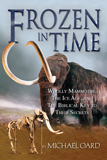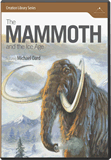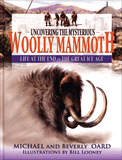
Youth-Earth Evolutionism
Mammoths didn’t die out that long ago: a creationist conclusion or the latest evolutionary idea?
News Source
- LiveScience: “Mammoths Were Alive More Recently than Thought”
Until recently, the prevailing old-earth perspective was that woolly mammoths survived until between 15,000 and 13,000 years ago. That’s the date given by some radiocarbon tests, and that date is matched with an extinction event perhaps caused by (among other ideas) environmental changes or human predation.
The scientists concluded that their “graveyard” spanned from about 7,600 to 11,000 years ago.
New research challenges the previous date, however. Scientists adopted a novel technique: testing frozen dirt for microscopic fragments that contain plant or animal DNA, indicating what organisms were alive when. (Note that this dating technique rests on the same old-age assumptions that many other dating methods, such as radiocarbon dating, employ.) A team recovered sediment from Alaska and recovered what team member Richard Roberts of the University of Wollongong calls “a genetic graveyard, frozen in time.”
Through further radiocarbon and other dating techniques, the scientists concluded that their “graveyard” spanned from about 7,600 to 11,000 years ago. The recovered samples contained DNA from the Arctic hare, bison, moose, horse, and mammoth. The finding shows that previous extinction estimates were overzealous and that smaller “pockets” of mammoths may have survived later than thought.
“Extinctions often seem dramatic and sudden in fossil records,” explained mammoth expert Ross MacPhee of the American Museum of Natural History. “But our study provides an idea of what an extinction event might look like in real time, with imperiled species surviving in smaller and smaller numbers until eventually disappearing completely.”
In fact, MacPhee implies an intriguing point that frequently seems lost on old-earth scientists: just because the fossils of an organism don’t exist in a certain part of the fossil record doesn’t mean that organism wasn’t alive when that part of the fossil record was laid down. In other words, the absence of evidence is not evidence of absence (read more about this concept in The History of the Development of the Geological Column.) Of course, this point is magnified if one rejects the old-earth tale of how the fossil layers were deposited. Thus (for example), even if we were to accept the team’s dating methods for the frozen sediments (which we don’t), mammoths could have survived even more recently than 7,600 years. By the same logic, dinosaurs could have outlived their “extinction” placed at 65 million years ago (as evolutionists have concluded).
If one looks through the lens of the biblical worldview, however, the focus is quite different. The fossil record and frozen sediments are largely the result of a global Flood about 4,500 years ago and the Ice Age that ensued. As for the last temporal whereabouts of the mammoth, young-earth creationists have done their own research.
Further Reading
- A mammoth number of mammoth hypotheses (from Frozen in Time)
- Where Does the Ice Age Fit?
- Get Answers: Ice Age, Mammoths, Young Age Evidence
For More Information: Get Answers
Remember, if you see a news story that might merit some attention, let us know about it! (Note: if the story originates from the Associated Press, FOX News, MSNBC, the New York Times, or another major national media outlet, we will most likely have already heard about it.) And thanks to all of our readers who have submitted great news tips to us. If you didn’t catch all the latest News to Know, why not take a look to see what you’ve missed?
(Please note that links will take you directly to the source. Answers in Genesis is not responsible for content on the websites to which we refer. For more information, please see our Privacy Policy.)
Recommended Resources

Answers in Genesis is an apologetics ministry, dedicated to helping Christians defend their faith and proclaim the good news of Jesus Christ.
- Customer Service 800.778.3390
- © 2024 Answers in Genesis






